Sergioballester-blog - Sin Título

More Posts from Sergioballester-blog and Others
September 15
This one is technically not yet history, because at the time of posting, the little craft has about half an hour left to go. That said, let’s proceed.
In 2017, NASA’s Cassini space probe ended its twenty-year mission at Saturn. After a nearly-seven-year-long journey there, it orbited the ringed planet for 13 years and just over two months, gathering copious amounts of information about the planet, said rings, and many of its moons. It landed an ESA probe called Huygens on Titan, the first-ever soft landing in the outer Solar System. It discovered lakes, seas, and rivers of methane on Titan, geysers of water erupting from Enceladus (and passed within 50 miles of that moon’s surface), and found gigantic, raging hurricanes at both of Saturn’s poles.
And the images it returned are beautiful enough to make you weep.
On this day in 2017, with the fuel for Cassini’s directional thrusters running low, the probe was de-orbited into the Saturnian atmosphere to prevent any possibility of any contamination of possible biotic environments on Titan or Enceladus. The remaining thruster fuel was used to keep the radio dish pointed towards Earth so the probe could transmit information about the upper atmosphere of Saturn while it was burning up due to atmospheric friction.
This is us at our best. We spent no small amount of money on a nuclear-powered robot, launched it into space, sent it a billion miles away, and worked with it for two decades just to learn about another planet. And when the repeatedly-extended missions were through, we made the little craft sacrifice itself like a samurai, performing its duty as long as it could while it became a shooting star in the Saturnian sky.

Rhea occulting Saturn

Water geysers on Enceladus

Strange Iapetus

Look at this gorgeousness

A gigantic motherfucking storm in Saturn’s northern hemisphere

Tethys

This image is from the surface of a moon of a planet at least 746 million miles away. Sweet lord

Mimas

Vertical structures in the rings. Holy shit

Titan and Dione occulting Saturn, rings visible

Little Daphnis making gravitational ripples in the rings

That’s here. That’s home. That’s all of us that ever lived.

Saturn, backlit

A polar vortex on the gas giant

Icy Enceladus
(All images from NASA/JPL)
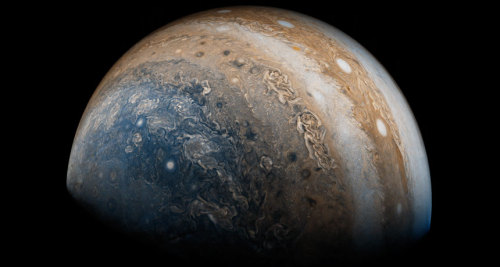









Jupiter Descending

Shuttle Endeavour’s flight deck. 🚀


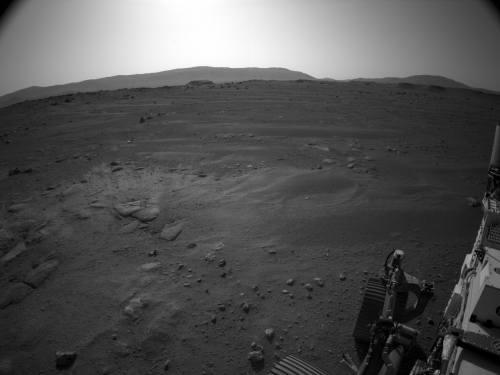

Perseverance: Some early Navcam (navigation camera) images taken over the (Earth) weekend on sol 2. Originals are here: [1] [2] [3] [4]. Credit: NASA/JPL-Caltech

Image of Saturn taken by Cassini spacecraft in October 28, 2016.
Credit: NASA/JPL
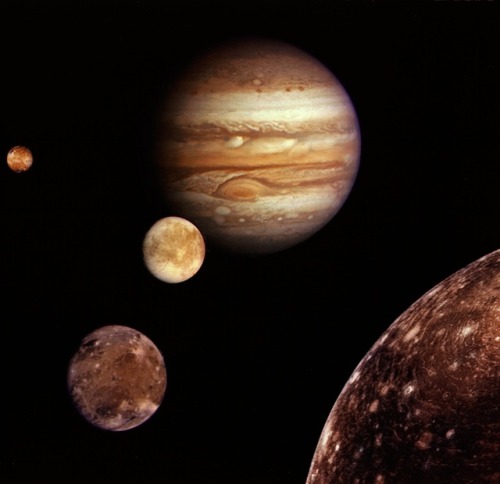
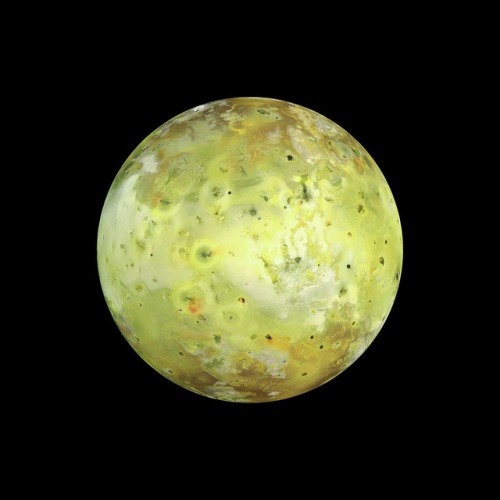
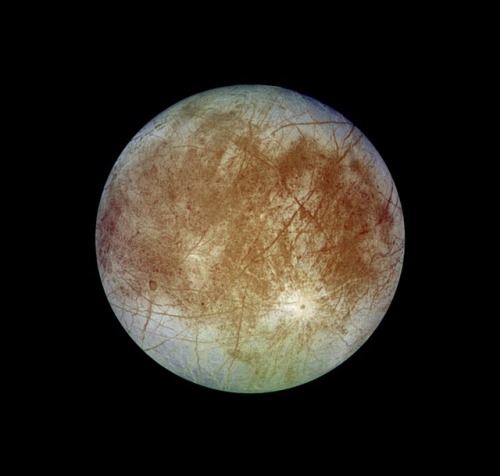
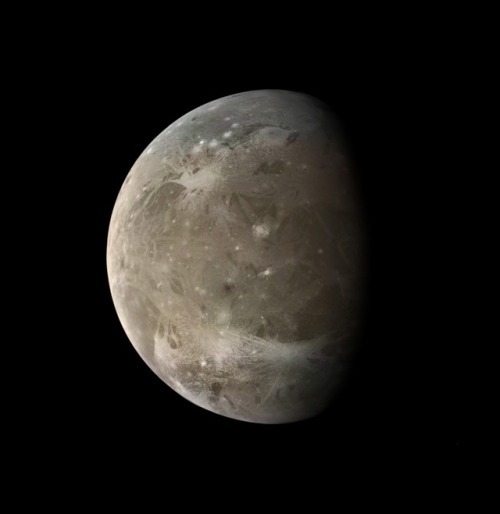
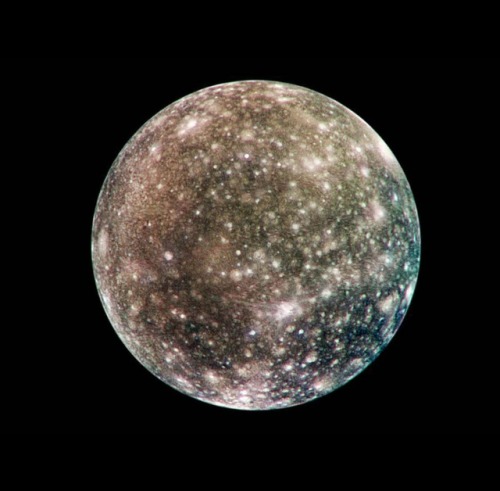
Galilean moons
The Galilean moons are the four largest moons of Jupiter — Io, Europa, Ganymede, and Callisto. They were first seen by Galileo Galilei in January 1610, and recognized by him as satellites of Jupiter in March 1610. They are the first objects found to orbit another planet. Their names derive from the lovers of Zeus. They are the first objects found to orbit another planet. Their names derive from the lovers of Zeus. They are among the largest objects in the Solar System with the exception of the Sun and the eight planets, with a radius larger than any of the dwarf planets.
Io is the fourth largest moon in the Solar System. With over 400 active volcanos, Io is the most geologically active object in the Solar System. Its surface is dotted with more than 100 mountains, some of which are taller than Earth’s Mount Everest. Unlike most satellites in the outer Solar System (which have a thick coating of ice), Io is primarily composed of silicate rock surrounding a molten iron or iron sulfide core. Although not proven, recent data from the Galileo orbiter indicate that Io might have its own magnetic field.
Europa the second of the four Galilean moons, is the second closest to Jupiter and the smallest at 3121.6 kilometers in diameter, which is slightly smaller than the Moon. The name comes from a mythical Phoenician noblewoman, Europa, who was courted by Zeus and became the queen of Crete, though the name did not become widely used until the mid-20th century. It has a smooth and bright surface, with a layer of water surrounding the mantle of the planet, thought to be 100 kilometers thick. The smooth surface includes a layer of ice, while the bottom of the ice is theorized to be liquid water. The apparent youth and smoothness of the surface have led to the hypothesis that a water ocean exists beneath it, which could conceivably serve as an abode for extraterrestrial life.
Ganymede is the largest moon in the Solar System, and is even bigger than the planet Mercury. It is the only satellite in the Solar System known to possess a magnetosphere, likely created through convection within the liquid iron core.
Callisto is the fourth and last Galilean moon, and is the second largest of the four, and at 4820.6 kilometers in diameter, it is the third largest moon in the Solar System, and barely smaller than Mercury, though only a third of the latter’s mass. It is named after the Greek mythological nymph Callisto, a lover of Zeus who was a daughter of the Arkadian King Lykaon and a hunting companion of the goddess Artemis. It is one of the most heavily cratered satellites in the Solar System, and one major feature is a basin around 3000 km wide called Valhalla.
source
image credit: NASA/JPL

Sampling the ocean on Enceladus by europeanspaceagency


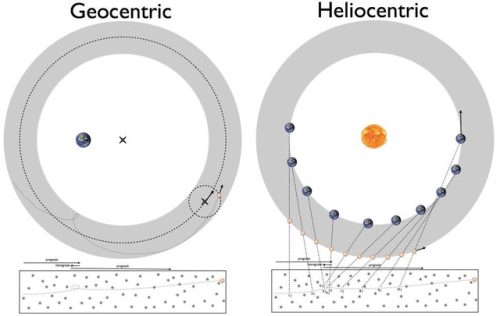






What Separates A Good Scientific Theory From A Bad One?
“It’s why an idea like dark matter is so powerful. By adding just a single new species of particle — something that’s cold, collisionless, and transparent to light and normal matter — you can explain everything from rotating galaxies to the cosmic web, the fluctuations in the microwave background, galaxy correlations, colliding galaxy clusters, and much, much more. It’s why ideas with a huge number of free parameters that must be tuned to get the right results are less satisfying and less predictively powerful. If we can model dark energy, for instance, with just one constant, why would we invent multi-field models with many parameters that are no more successful?”
You’ve often heard, when discussing competing scientific ideas, of appealing to Occam’s razor. Often paraphrased as “all things being equal, the simplest explanation is usually best,” it seems to open the door for people to argue over which explanation is simplest. This should not, however, be a point of contention: the explanation that’s simplest is the one that introduces the fewest number of new, additional free parameters. And when it comes to all things being equal, the things in question ought to be the number of new phenomena the novel idea can explain, along with the number of discernible predictions as compared with the old, prevailing idea. The best scientific ideas are the ones that explain the most by adding the least, while the worst ones unnecessarily add additional parameters on top of what we observe for no good reason other than personal bias. Ideas may be a dime-a-dozen, but a good idea is hard to find.
The next time you encounter an interesting, wild idea that someone throws out there, use this criteria to evaluate it. You just might be surprised at how quickly you can tell whether an idea is good or bad!

Saturn by europeanspaceagency
Mars Helicopter: 6 Things to Know About Ingenuity

When our Perseverance Mars rover lands on the Red Planet on Feb. 18, 2021, it will bring along the Ingenuity helicopter.
This small-but-mighty craft is a technology demonstration that will attempt the first powered, controlled flight on another planet. Its fuselage is about the size of a tissue box, and it weighs about 4 pounds (1.8 kg) on Earth. It started out six years ago as an implausible prospect and has now passed its Earthbound tests.
Here are six things to know about Ingenuity as it nears Mars:
1. Ingenuity is an experimental flight test.

This Mars helicopter is known as a technology demonstration, which is a project that aims to test a new capability for the first time with a limited scope. Previous technology demonstrations include Sojourner, the first Mars rover, and the Mars Cube One (MarCO) CubeStats that flew by Mars.
Ingenuity does not carry any science instruments and is not part of Perseverance’s science mission. The only objective for this helicopter is an engineering one – to demonstrate rotorcraft flight in the thin and challenging Martian atmosphere.
2. Mars won’t make it easy for Ingenuity.

Mars’ atmosphere is around 1% the density of Earth’s. Because of that lack of density, Ingenuity has rotor blades that are much larger and spin faster than a helicopter of Ingenuity’s mass here on our planet. It also must be extremely light to travel to Mars.
The Red Planet also has incredibly cold temperatures, with nights reaching minus 130 degrees Fahrenheit (-90 degrees Celsius) in Jezero Crater, where our rover and helicopter will land. Tests on Earth at the predicted temperatures indicate Ingenuity’s parts should work as designed, but the real test will be on Mars.
3. Ingenuity relies on Perseverance for safe passage to Mars and operations on the Martian surface.

Ingenuity is nestled sideways under Perseverance’s belly with a cover to protect the helicopter from debris during landing. The power system on the Mars 2020 spacecraft periodically charges Ingenuity’s batteries during the journey to the Red Planet.
In the first few months after landing, Perseverance will find a safe place for Ingenuity. Our rover will shed the landing cover, rotate the helicopter so its legs face the ground and gently drop it on the Martian surface.
4. Ingenuity is smart for a small robot.

NASA’s Jet Propulsion Laboratory will not be able to control the helicopter with a joystick due to delays communicating with spacecraft across interplanetary distances. That means Ingenuity will make some of its own decisions based on parameters set by its engineering team on Earth.
During flight, Ingenuity will analyze sensor data and images of the terrain to ensure it stays on a flight path designed by project engineers.
5. The Ingenuity team counts success one step at a time.

Ingenuity’s team has a long list of milestones the helicopter must pass before it can take off and land in the Martian atmosphere.
Surviving the journey to and landing on Mars
Safely deploying onto the Martian surface from Perseverance’s belly
Autonomously keeping warm through those intensely cold Martian nights
Autonomously charging itself with its solar panel
Successfully communicating to and from the helicopter via the Mars Helicopter Base Station on Perseverance
6. If Ingenuity succeeds, future Mars exploration could include an ambitious aerial dimension.

The Mars helicopter intends to demonstrate technologies and first-of-its-kind operations needed for flying on Mars. If successful, these technologies and flight experience on another planet could pave the way for other advanced robotic flying vehicles.
Possible uses of a future helicopter on Mars include:
A unique viewpoint not provided by current orbiters, rovers or landers
High-definition images and reconnaissance for robots or humans
Access to terrain that is difficult for rovers to reach
Could even carry light but vital payloads from one site to another
Make sure to follow us on Tumblr for your regular dose of space: http://nasa.tumblr.com
-
 stanview liked this · 9 months ago
stanview liked this · 9 months ago -
 wallylouis reblogged this · 9 months ago
wallylouis reblogged this · 9 months ago -
 guy60660 liked this · 9 months ago
guy60660 liked this · 9 months ago -
 tremendouslycleverlight reblogged this · 9 months ago
tremendouslycleverlight reblogged this · 9 months ago -
 branding999iron liked this · 2 years ago
branding999iron liked this · 2 years ago -
 a-mayan-joy-has-nuts liked this · 2 years ago
a-mayan-joy-has-nuts liked this · 2 years ago -
 lesilencedespoissons reblogged this · 3 years ago
lesilencedespoissons reblogged this · 3 years ago -
 lesilencedespoissons liked this · 3 years ago
lesilencedespoissons liked this · 3 years ago -
 mariuccia reblogged this · 3 years ago
mariuccia reblogged this · 3 years ago -
 unvientoceleste reblogged this · 3 years ago
unvientoceleste reblogged this · 3 years ago -
 inabsentiamortis reblogged this · 3 years ago
inabsentiamortis reblogged this · 3 years ago -
 necesito-otro-url reblogged this · 3 years ago
necesito-otro-url reblogged this · 3 years ago -
 necesito-otro-url liked this · 3 years ago
necesito-otro-url liked this · 3 years ago -
 mrbrownstoned liked this · 3 years ago
mrbrownstoned liked this · 3 years ago -
 2-gay-2-furious liked this · 3 years ago
2-gay-2-furious liked this · 3 years ago -
 doctorwookie liked this · 3 years ago
doctorwookie liked this · 3 years ago -
 esmentiraa reblogged this · 3 years ago
esmentiraa reblogged this · 3 years ago -
 9-wing-1 reblogged this · 3 years ago
9-wing-1 reblogged this · 3 years ago -
 tekkoman liked this · 3 years ago
tekkoman liked this · 3 years ago -
 profesorredranger liked this · 3 years ago
profesorredranger liked this · 3 years ago -
 wholecogan liked this · 3 years ago
wholecogan liked this · 3 years ago -
 xxcereal-killerxx reblogged this · 3 years ago
xxcereal-killerxx reblogged this · 3 years ago -
 vagge-npr reblogged this · 3 years ago
vagge-npr reblogged this · 3 years ago -
 vagge-npr liked this · 3 years ago
vagge-npr liked this · 3 years ago -
 evilveva liked this · 3 years ago
evilveva liked this · 3 years ago -
 morennnaaaus liked this · 3 years ago
morennnaaaus liked this · 3 years ago -
 vomitamos reblogged this · 3 years ago
vomitamos reblogged this · 3 years ago -
 gratifymeimmediately liked this · 3 years ago
gratifymeimmediately liked this · 3 years ago -
 boccs reblogged this · 3 years ago
boccs reblogged this · 3 years ago -
 boccs liked this · 3 years ago
boccs liked this · 3 years ago -
 amwa liked this · 3 years ago
amwa liked this · 3 years ago -
 interdimensionvl reblogged this · 3 years ago
interdimensionvl reblogged this · 3 years ago -
 gotankgo liked this · 3 years ago
gotankgo liked this · 3 years ago -
 curatorofthisdigitalmorass reblogged this · 3 years ago
curatorofthisdigitalmorass reblogged this · 3 years ago -
 curatorofthisdigitalmorass liked this · 3 years ago
curatorofthisdigitalmorass liked this · 3 years ago